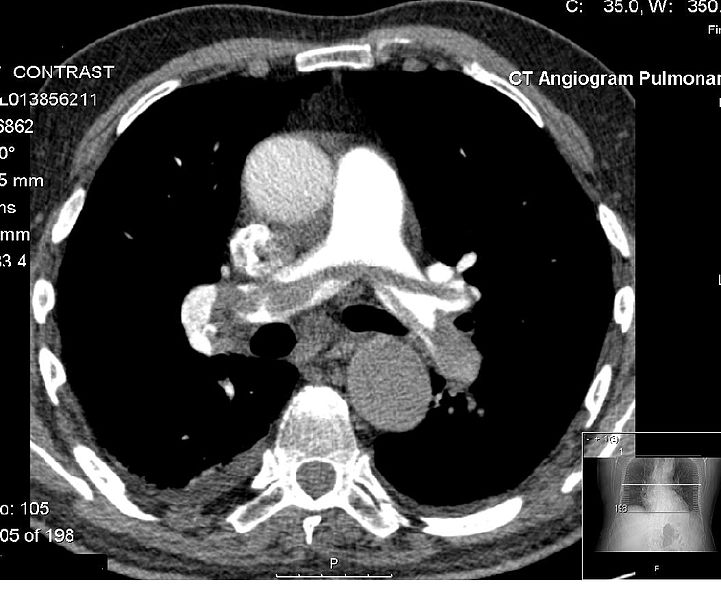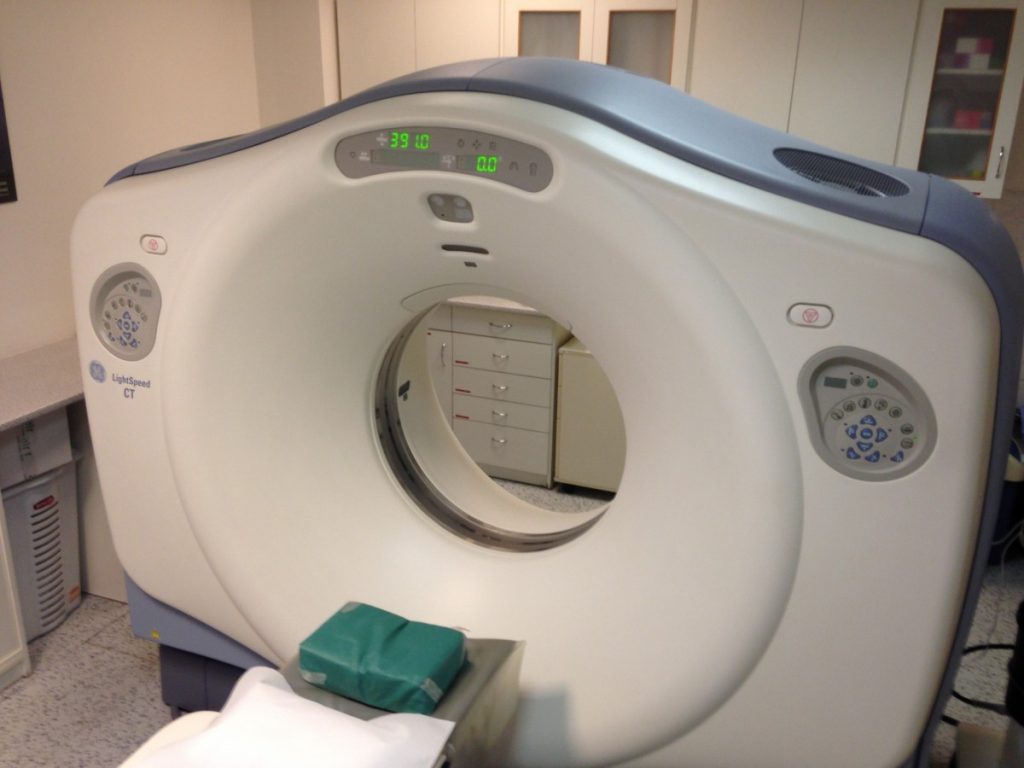To assess rapidly innovative treatment methods in patients with adult respiratory distress syndrome as well as those at risk of developing ARDS. To establish a network of interactive Critical Care Treatment Groups (CCTG) to establish and maintain the required infrastructure to perform multiple therapeutic trials that may involve investigational drugs, approved agents not currently used for treatment of ARDS, or treatments currently used but whose efficacy has not been well documented.
Official Title
Conditions
– Acute Respiratory Distress Syndrome- Lung Diseases
Study Type
Interventional
Study Design
Treatment, Placebo Control, Factorial Assignment
Further Details
BACKGROUND: Adult respiratory distress syndrome affects approximately 150,000 people in the United States each year. Despite twenty years of research into the mechanisms that cause this syndrome and numerous developments in the technology of mechanical ventilation, the mortality has remained greater than 50 percent. Many of the patients are young, and in addition to the tragic loss of human life, can be added the cost to society because these patients spend an average of two weeks in intensive care units and require multiple high tech procedures. Because of the overwhelming nature of the lung injury once it is established, prevention would appear to be the most effective strategy for improving the outlook in this condition. Basic research has identified numerous inflammatory pathways that are associated with the development of ARDS. Agents that block these mediators prolong survival in animals with lung injury, and a few of them have been tested in patients. Because of the large number of putative mediators and the variety of ways that their action can be blocked, the possibility for new drug development is almost infinite. This is an exciting prospect, since it envisions the first effective pharmacologic treatment for ARDS. However, preliminary clinical studies have shown conflicting results, and there is an urgent need for a mechanism to efficiently and effectively test new drugs in ARDS. Treatment studies in patients with ARDS are difficult to perform for three reasons. The complicated clinical picture makes it difficult to accumulate a large number of comparable patients in any one center. There is no agreement on the optimal supportive care of these critically ill patients. Many of the patients meeting study criteria will not be enrolled in study protocols because of the acute nature of the disease process. For these reasons, therapeutic trials in ARDS require multicenter cooperation. The concept for the initiative was first discussed at a meeting of the Adult Respiratory Distress Syndrome Foundation and staff of the Division of Lung Diseases. The results of a working meeting on uniform definitions in ARDS held at the 1992 meeting of the American Thoracic Society reinforced the recommendation from the community for National Heart, Lung, and Blood Institute participation in drug evaluation in ARDS. The concept for the initiative was approved by the September 1992 National Heart, Lung, and Blood Advisory Council. The Requests for Proposals were released in October 1993. DESIGN NARRATIVE: It is anticipated that over the nine-year period, several multicenter clinical trials will be developed and implemented. A twelve-month Phase I period was devoted to planning and development of the infrastructure and committee structure and to protocol development and prioritization. In Phase IIa, staff are trained in data acquisition procedures and patients are enrolled. Additional protocol development may begin for subsequent studies. In Phase IIb, after the last patients in the first study have completed their follow-up measurements, data will be reviewed and the initial study will be closed out. Protocol development continues for subsequent trials. In Phase III, final data analysis and publication preparation will occur. Enrollment of 1,000 patients into the first ARDSNet protocol, “Ketoconazole and Respiratory Management in Acute Lung Injury/Acute Respiratory Distress Syndrome” (KARMA) began in the spring of 1996. KARMA assessed the efficacy of 6ml/kg versus 12 ml/kg positive pressure ventilation in reducing mortality and morbidity in patients with acute lung injury and ARDS. It also assessed the efficacy of Ketoconazole, a thromboxane synthetase inhibitor, in reducing mortality and morbidity in patients with acute lung injury and ARDS. The ketoconazole arm was stopped by the DSMB in January 1997 after the enrollment of 234 patients. Ketoconazole did not show any benefit in survival, duration of ventilation, or any measure of lung function. The ventilator arm of the protocol continued until March 10, 1999 and compared the efficacy of high (12 ml/kg) and low (6 ml/kg) tidal volume ventilation in reducing mortality and morbidity in patients with acute lung injury and ARDS. The ventilator portion of the trial was stopped on March 10, 1999 on the recommendation of the DSMB when the data from the first 861 patients showed approximately 25 percent fewer deaths among patients receiving small, rather than large, breaths of air from the mechanical ventilator. A new drug, Lisofylline, was selected to replace Ketoconazole in the factorial design ventilation protocol. The Lisofylline study (LARMA) began in February 1998. The study tested the efficacy of Lisofylline, an analog of pentoxifylline, that has been shown to protect against tissue injury mediated by oxidants and to suppress production of a number of cytokine mediators that amplify the inflammatory process. Patients were randomized to either the high or low tidal volume ventilation treatment group and between Lisofylline and placebo. The aim of the Lisofylline protocol was to determine whether the administration of Lisofylline early after the onset of acute lung injury or ARDS wouldl reduce morbidity or mortality. The study was co-sponsored by Cell Therapeutics Incorporated. The trial was stopped by the DSMB on May 27, 1999 after results were obtained on 221 patients. There was no effect on mortality, time on ventilation or organ failure. The “Late Steroid Rescue Study (LaSRS) :The Efficacy of Corticosteroids as Rescue Therapy for the Late Phase of Acute Respiratory Distress Syndrome”LaSRS (pronounced “Lazarus”) compares the effect of corticosteroids with placebo in the management of late-phase (greater than seven days) ARDS. The study will determine if the administration of the corticosteroid, methylprednisolone sodium succinate, in severe ARDS that is either stable or worsening after seven days, will reduce mortality and morbidity. The primary endpoint is mortality at 60 days. Secondary endpoints include ventilator free days and organ failure free days. LaSRS was designed to include 400 patients and began recruiting in the Spring of 1997. In October 1999, the DSMB reduced the recruitment target number to 200 patients because the eligible patients were fewer than anticipated. In November 1999, the Network began a new trial as a follow on to the ventilator trial that has been named the “assessment of low tidal volume and elevated end-expiratory pressure to obviate lung injury” (ALVEOLI). This trial was a prospective, randomized, controlled multi-center trial which included 550 patients and compared two groups of patients given the low tidal volume ventilation protocol. One group received a higher end expiratory pressure and recruitment maneuvers and the other received higher oxygenation levels. The primary endpoint was mortality at 60 days. Secondary endpoints included ventilator free days and organ failure free days. In January 2002, the DSMB recomended that the study stop for lack of efficacy. The study was closed on February 5, 2002. Network investigators have developed a plan for a new protocol to assess the Pulmonary Artery Catheter as a management tool in ARDS. The new study was prompted by recommendations from the FDA/NIH Pulmonary Artery Catheter Clinical Outcomes workshop convened in August 1997 in response to concerns in the medical community regarding the clinical benefit and safety of pulmonary artery catheters. The new protocol in the Fluids and Catheters Treatment Trial (FACTT) is a two by two factorial design comparing the patients receiving PAC or a central venous catheter (CVC) with one of two fluid management strategies (conservative vs. liberal). The randomized, multicenter trial is designed to include 1000 patients. The primary endpoint is mortality at 60 days. Secondary endpoints include ventilator free days and organ failure free days. Albuterol versus Placebo in Acute Lung Injury (ALTA) Study: The phase II/III study will test the safety and efficacy of aerosolized beta-2 adrenergic agonist therapy (albuterol sulfate) for reducing mortality in patients with acute lung injury. In phase II, the safety of albuterol at the 5 mg. dose will be compared to saline in approximately 100 patients. The dose will be reduced to 2.5 mg if patients exceed defined heart rate limits. Consequently, a phase III placebo-controlled double-blinded, randomized trial on approximately 1,000 patients will compare 60 day mortality and ventilator free days to day 28 between the safe albuterol dose established in phase II and placebo saline. New efforts have been initiated to increase sample collection and utilize collected patient materials to investigate mechanisms of ARDS pathogenesis. In addition to investigations of hypotheses related to cytokines and inflammatory mediators, the Network is preparing to collect samples for future studies of genetic determinants of ARDS.
Study Start
Eligibility & Criteria
Ages Eligible for Study: 13 Years and above, Genders Eligible for Study: Both Criteria Men and women, 13 years of age or older, with ARDS or risk factors for ARDS. Patients will be considered at risk if they are critically ill and have trauma, sepsis, shock, pneumonia, inhalation injury, drug overdose, pancreatitis, hypertransfusion.
Total Enrolment
Contact Details
[1] Antonio Anzueto, University of Texas [2] Alfred Connors, University of Virginia [3] Bennett deBoisblanc, Louisiana State University [4] Michael Donahoe, University of Pittsburgh [5] Kalpalatha Guntupalli, Baylor College of Medicine [6] Robert Hite, Wake Forest University [7] Michael Murray, Mayo Foundation [8] James Russell, University of British Columbia [9] Gregory Schmidt, University of Chicago [10] David Schoenfeld, Massachusetts General Hospital [11] Jay Steingrub, Baystate Medical CenterAll content and media on the HealthEngine Blog is created and published online for informational purposes only. It is not intended to be a substitute for professional medical advice and should not be relied on as health or personal advice. Always seek the guidance of your doctor or other qualified health professional with any questions you may have regarding your health or a medical condition. Never disregard the advice of a medical professional, or delay in seeking it because of something you have read on this Website. If you think you may have a medical emergency, call your doctor, go to the nearest hospital emergency department, or call the emergency services immediately.







